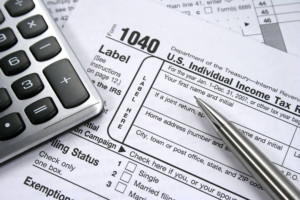
All U.S. citizens living abroad or in the country are required to file an income tax return post reporting their worldwide income with the Internal Revenue Service or IRS. The rules for both groups are almost similar except for some additional consideration for those who have a foreign income.
The filing of the returns for 2017 would start from January 29, 2018 while its deadline is April 17, 2018. You can also apply for an extension beforehand and buy some more time. If you file beyond the due date, you are required to pay a penalty which gets exempted for all those who are due to a refund.
To file the taxes, you must get various forms and documents ready before January 31, 2018. This would save you both hassle and time. Let us walk through some of the essential forms that you need to collect for proper filing of taxes.
- The W-2 Form
W-2 form is the wage and Tax Statement Form which shows the total income earned by any individual as well as the taxes withheld from it for social security, Medicare etc. You also report your voluntary contributions here like your retirement fund, medical expenses, childcare fund etc. The form is given to you by your employer. Those who had switched multiple jobs in a year would need to file multiple W-2 forms.
- Form 1095-A
It has become an essential form to file ever since the Affordable Care Act rolled out. With this form, you calculate your medical insurance premium tax credit for an independently purchased insurance plan through state or federal body. For declaration of premiums of health insurance via the employers, the 1095-B or 1095-C forms need to be filed.
- 1099-MISC
This form is meant for all freelancers and independent contractors. In this form, you report income of over $600 that you earned annually from any company. You can also show your deductions like the amount spent on supplies, home office, business mileage etc.
- 1099-B
This form is meant for stockbrokers to showcase the profit and loss received from stock transactions.
- 1099-INT
For each of your bank accounts, saving bonds or certificates of deposits on which you earned over $10 interest annually, you must file this form individually.
- 1099-DIV
This form is used to declare the capital gains and dividends procured over $10 from investments regardless of the fact that you might have reinvested them.
- 1099-R
Using this form, you declare all your earned distributions over $10 from retirement plans, pension plans, annuities, any kind of insurances and profit-sharing plan.
- 1099-G
This form is used to declare the total unemployment insurance collected annually if any.
- 1099-C
This form is used to declare all debts forgiven to you by any creditor or lender. The U.S. government deems discharged debts as income which is liable for taxes.
- 1098
Via this form, all homeowners with mortgages show the amount paid as interest on their loan. This information is sent out by lenders on interest amount crossing $600 threshold.
- 1098-T
This form is given out by higher education colleges or universities to its students to show all education-related costs. This is a crucial form for all those taxpayers qualifying for the Lifetime Learning Credit, the American Opportunity Tax Credit or any kind of education-related tax breaks.
- 1098- E
In this form, all information on the interest amount crossing $600 on student loans is declared. Based on criteria of income level, taxpayers have the option to deduct student loan interest, capitalized interest and origination fees.
Wrapping up
Tax codes can be quite confusing. Its best that you take it early and get them sorted. In case you find it confusing, you can always seek help of agencies which help you in filing taxes. You can even take help of various free tax calculators to know about your tax credits and debits.



Recent Comments